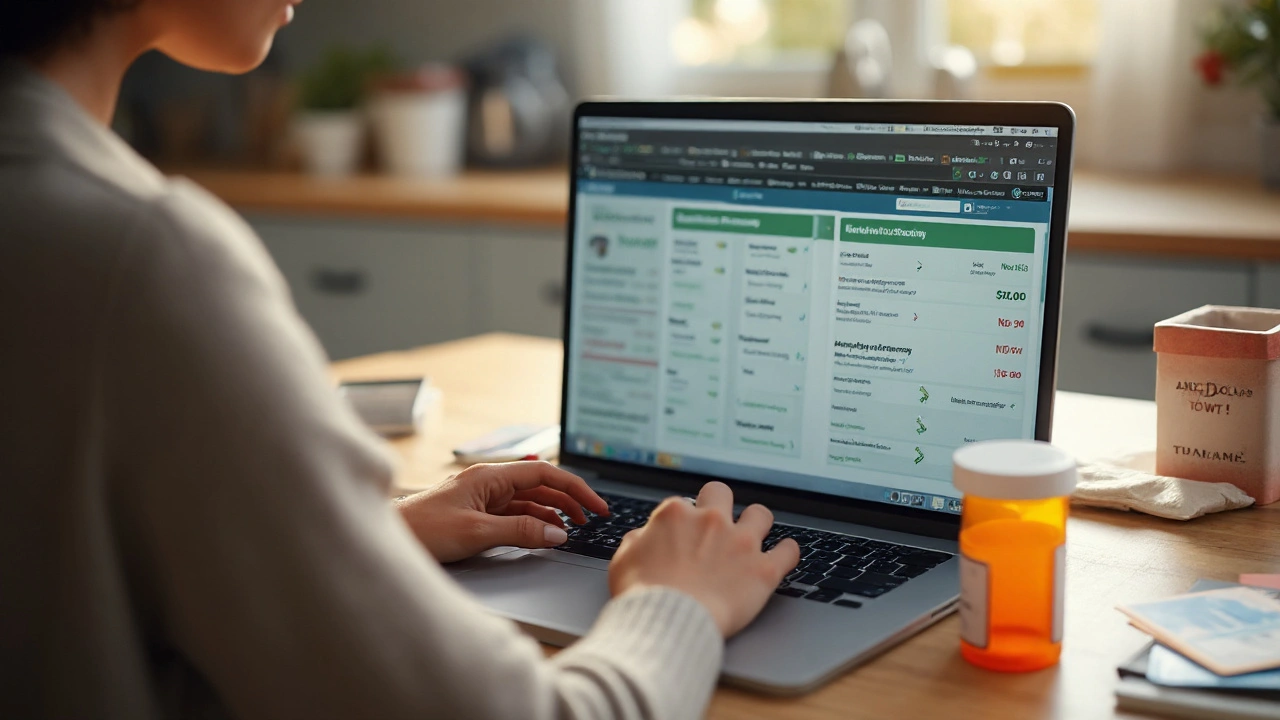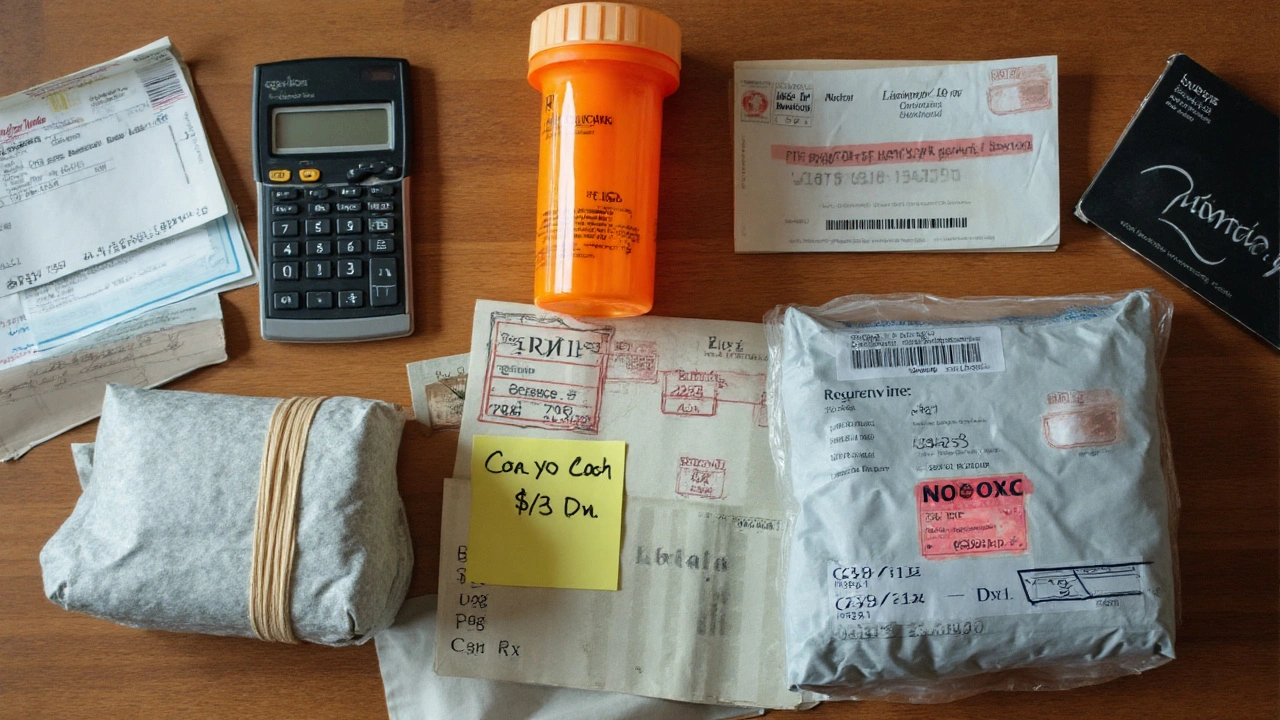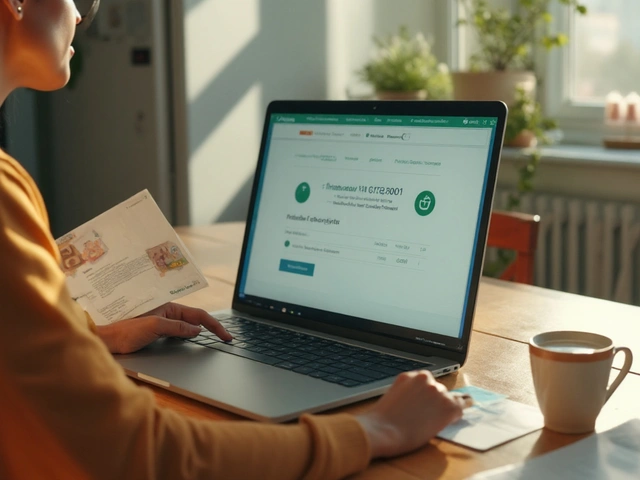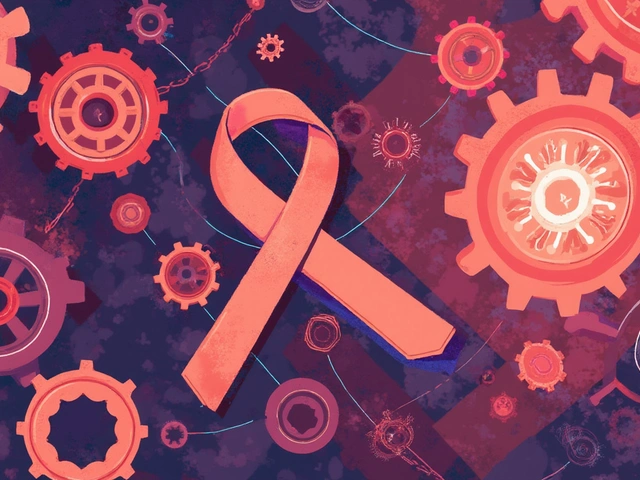
You’re hunting for cheap generic lisinopril online because you want to lower your blood pressure, not blow up your budget. Good news: in the U.S., lisinopril is one of the most affordable heart meds. The catch? You need to buy it the right way-licensed pharmacy, valid prescription, no shady shortcuts. I’ll keep this simple: you’ll see what’s fair to pay today, how to get that price without playing coupon roulette, how to spot fake pharmacies, and the exact steps to order safely.
What jobs are you trying to get done here? Likely these: 1) find a legit online place that fills lisinopril at a low price, 2) understand if you should use insurance or pay cash, 3) get a prescription fast if you don’t have one, 4) avoid scams and risky sites, and 5) not get stuck with side effects or the wrong dose. Let’s check all those boxes.
What you actually need to buy lisinopril online safely and cheaply
Lisinopril is an ACE inhibitor used for high blood pressure, heart failure, and after a heart attack. It’s generic, so you’re not paying brand-name prices. Still, U.S. rules apply: you need a valid prescription, and the pharmacy must be licensed. That’s non‑negotiable.
How do you buy it online the right way?
- Use a U.S.-licensed pharmacy. Look for state licensure, a physical U.S. location, and verification seals. The FDA’s BeSafeRx program and the National Association of Boards of Pharmacy (.pharmacy Verified Websites) are the gold standards for checking legitimacy.
- Have a prescription. If you don’t, use a U.S.-based telehealth visit. You’ll answer a few health questions and may have a short video call with a licensed clinician. They’ll review your history, meds, and recent blood pressure readings.
- Choose pickup or mail order. Many online services let you ship to your door in 2-5 days or send to your local pharmacy for same-day pickup.
What you’ll be asked during checkout or a telehealth visit:
- Current blood pressure numbers (from the past 1-2 weeks). Home cuff readings are fine; bring averages if you have them.
- All medicines and supplements you take. Especially diuretics (e.g., hydrochlorothiazide), NSAIDs (ibuprofen, naproxen), potassium supplements, potassium‑sparing diuretics, and ARBs (like losartan). These can change safety and dosing.
- Kidney status and labs if available (creatinine, eGFR) and potassium levels. If you don’t know them, that’s okay-your prescriber may order labs.
- Pregnancy plans. Lisinopril is unsafe in pregnancy; you’ll be switched to a safer option if needed. If you can become pregnant, expect the clinician to ask about contraception.
- Any history of angioedema (lip/tongue swelling). If yes, ACE inhibitors like lisinopril are off the table.
Typical dosing used by clinicians (not medical advice): many adults start around 5-10 mg daily for blood pressure, adjusted every few weeks based on numbers and side effects. Heart failure dosing often starts lower. Your prescriber decides based on your case and your labs. Sources clinicians lean on include AHA/ACC hypertension guidance.
Fast safety check before you place an order:
- If you take potassium supplements, a potassium-sparing diuretic (spironolactone, amiloride), or an ARB (losartan, valsartan), do not start lisinopril without your prescriber’s say-so. Risk: high potassium and kidney issues.
- If you rely on daily NSAIDs, ask how to manage that with lisinopril; the combo can strain kidneys in some people.
- Watch for dry cough. It’s common with ACE inhibitors. If it shows up and won’t quit, tell your clinician; people often switch to an ARB.
- Stop and seek urgent care for swelling of face, lips, tongue, or throat. That’s angioedema-rare, but serious.
What “cheap” really looks like in the U.S. right now: lisinopril is one of the rock-bottom generics. Many pharmacies price a 30‑day supply under $10 cash price, and a 90‑day fill is often under $20 without insurance. Prices swing based on dose and where you buy, but you shouldn’t be paying premium-brand money for this drug.
Insurance or cash-what’s smarter? For lisinopril, cash prices with a reputable discount program are often lower than your insurance copay. That’s why many people run it as a self-pay med even if they have insurance. If you do want to use insurance, mail-order 90‑day fills through your plan can be very cheap too.

Price, insurance, and the simplest ways to cut your monthly cost
Let’s anchor the price so you know what “good” looks like. These are typical U.S. retail ranges I see in 2025, assuming you’re using a common discount card or a low-cost pharmacy program. Your exact price may vary by location, dose, and stock.
| Option | Typical 30‑day Price | Typical 90‑day Price | Notes |
|---|---|---|---|
| Local retail pharmacy (cash with discount) | $3-$12 | $8-$25 | Often the fastest; prices vary by chain and dose (5-40 mg) |
| Mail‑order cash (online pharmacy) | $4-$10 | $10-$22 | Delivery in 2-5 days; great for stable long‑term use |
| Insurance copay (retail) | $0-$15 | $0-$30 | Depends on plan tier; 90‑day often best value |
| Membership/flat‑fee generic lists | Often $4-$10 | Often $10-$20 | Warehouse clubs or flat‑fee programs can be very competitive |
| Telehealth + pharmacy bundle | Med: $4-$12; Visit: $0-$30 | Med: $10-$25; Visit: usually one‑time | Good if you need both prescription and delivery |
How to get the lowest price with the least hassle:
- Ask for a 90‑day prescription. Most pharmacies price long fills lower per month.
- Compare two channels: your plan’s mail order vs. a cash discount price. Run both before you decide.
- Keep the dose stable. Lisinopril comes in common strengths (2.5, 5, 10, 20, 30, 40 mg). A stable dose means smoother refills and better deals on 90‑day fills.
- Use one pharmacy for all your heart meds when possible. It helps catch interactions and simplifies renewals.
- Skip “too good to be true” overseas sites. The price difference isn’t worth the risk of counterfeit pills.
Insurance tips (so you don’t overpay):
- Check your formulary. Lisinopril is almost always Tier 1 (lowest copay). If it’s not, call your plan-sometimes a pharmacy switch fixes it.
- Don’t assume insurance is cheapest. Ask the pharmacy to quote both your copay and a cash price with a discount. You can choose the lower one.
- If you’re on Medicare, many Part D plans offer lisinopril for a few dollars or even $0. Mail order can shave off a bit more.
- If you pay cash, membership clubs and flat‑fee generic programs are often $4-$10 a month.
Telehealth visit or not? If you already have a prescription, you’re set. If you don’t, a quick telehealth consult is fine for most people-blood pressure meds are commonly handled this way. Expect the clinician to ask for recent home BP readings, your medication list, any kidney issues, and whether you could be pregnant. Some services bundle the visit and pharmacy so your pills ship out right after approval.
Timing matters. If your blood pressure is very high or you have symptoms (chest pain, severe headache, shortness of breath, vision changes), skip the online route and get in-person care today. Once you’re stable, mail order becomes the easy button.
Refill planning to avoid gaps:
- Set auto-refills and delivery reminders. High blood pressure meds work when you take them daily; missing a week can spike numbers.
- Recheck labs when asked. After starting or increasing lisinopril, clinicians often check kidney function and potassium within 1-2 weeks, then again after dose changes.
- Track your BP at home. Aim for consistent morning readings, seated, arm supported, cuff at heart level. Log them in your phone.

Risks, red flags, and better alternatives if something feels off
Let’s talk safety and scams first, then real-world choices if lisinopril doesn’t fit you or the deal looks sketchy.
Hard red flags for fake or unsafe pharmacies:
- No prescription required for prescription meds. That’s illegal in the U.S.
- No U.S. address, no pharmacist contact, or no state license info.
- Wild pricing claims like “90% off any heart med, no Rx” or offers to ship from unknown countries.
- Website pushes you to pay by wire, gift card, or crypto. Walk away.
- Counterfeit‑style packaging or pills that look different without the pharmacy telling you about a manufacturer switch.
What credible verification looks like:
- NABP or .pharmacy verification, or state board license details you can check.
- FDA BeSafeRx tips followed: prescription required, U.S. address, licensed pharmacist available for questions.
- Clear return, privacy, and data security policies. Normal payment methods (credit/debit, HSA/FSA).
Common side effects and what to do:
- Dry cough. Not dangerous, just annoying. Tell your clinician; switching to an ARB often solves it.
- Dizziness or lightheadedness, especially in week 1 or after dose increases. Stand up slowly and check your BP. If it’s low or you faint, call your clinician.
- High potassium (can cause weakness, irregular heartbeat) and kidney bumps show up on labs. That’s why labs matter. Your dose may change.
- Angioedema (face/tongue swelling). This is an emergency-call 911.
How lisinopril compares to your nearest options when price and tolerability matter:
- Versus ARBs (losartan, valsartan): ARBs don’t usually cause cough, so they’re a common switch if cough hits. Price is still low, but in many areas lisinopril runs a bit cheaper.
- Versus combination pills (lisinopril/HCTZ): Combo pills can simplify your routine and may control BP better, but they can cost a bit more depending on your area. Still usually affordable, especially for 90‑day fills.
- Versus calcium channel blockers (amlodipine): Also inexpensive and well-tolerated, but swelling in the ankles can happen. Sometimes clinicians pair amlodipine with lisinopril to balance effects.
If price is still high at checkout, try this quick decision tree:
- Is it a 30‑day fill? Ask the prescriber to change to 90 days with 3 refills.
- Using insurance with a high copay? Ask the pharmacy for a cash discount quote and compare.
- Price high at your current chain? Check an independent or warehouse club pharmacy; prices can drop a few dollars.
- Telehealth bundle looks expensive? Use your existing prescription at a low‑cost retail pharmacy instead.
Quick checklist before you click “Buy”:
- Pharmacy is U.S.-licensed, shows a real address, and requires a prescription.
- You compared at least two prices (insurance vs. cash discount vs. mail order).
- You have a 90‑day script if you’ll take this long-term.
- You know your recent BP numbers and have a plan for labs if starting or changing dose.
- You’re not pregnant or planning pregnancy while on lisinopril; if that changes, notify your clinician right away.
Mini‑FAQ (straight answers):
Is it legal to buy lisinopril online in the U.S.? Yes-through a licensed U.S. pharmacy with a valid prescription. The FDA and state boards back this model.
Do I need a prescription if I’m just refilling? Yes. Even for generics. If yours expired, a short telehealth visit can renew it.
What dose should I choose? Your prescriber sets that. Many people use 10-20 mg daily for blood pressure, adjusted based on readings and labs.
How long until I see results? Blood pressure can start improving within days, with full effect in a couple of weeks. Keep taking it daily, even when you feel fine.
Can I drink alcohol? Light alcohol may be fine for many, but it can lower blood pressure and worsen dizziness. Ask your clinician based on your case.
Is brand Zestril better than generic? No real benefit for most people. FDA requires generics to meet the same quality standards.
What if I miss a dose? Take it when you remember unless it’s close to your next dose. Don’t double up.
Will I need labs? Usually yes-kidney function and potassium, especially after starting or changing dose.
Next steps you can act on today (ethical, fast, and cheap):
- Decide your channel: a) use your existing script at a low-cost retail or mail-order pharmacy, or b) book a quick U.S. telehealth visit to get a prescription.
- Gather your info: recent BP readings, medication list, allergies, and any kidney history.
- Ask your prescriber for a 90‑day supply with refills. If you’re stable, this is the simplest way to lock in a low monthly price.
- Price‑check two options: your insurance mail order vs. a cash discount at a reputable pharmacy. Pick the lower total.
- Set auto‑refill and delivery alerts so you never run out.
Troubleshooting by scenario:
- No prescription on hand: Use a U.S. telehealth service. Keep your BP log nearby. If you have complex conditions (advanced kidney disease, pregnancy, recent angioedema), expect a referral to in‑person care.
- Sticker shock at checkout: Switch to a 90‑day fill, ask for the cash price, or try a different pharmacy. This med should be cheap.
- Dry cough shows up: Message your prescriber. Many people switch to an ARB at a similar price.
- Dizzy or numbers run low: Check BP, hydrate, and contact your clinician. You might need a dose tweak or to time doses differently.
- Delivery delays: Use local pickup for the first fill, then move to mail order. Keep at least a 1‑week buffer on refills.
- Pharmacy looks sketchy: Verify licensure with your state board or the NABP. If they won’t show credentials, don’t buy.
Trusted sources behind this advice include the FDA’s BeSafeRx materials on safe online pharmacies, the National Association of Boards of Pharmacy licensing and .pharmacy verification program, and AHA/ACC guidance on blood pressure treatment that clinicians use to set dosing and lab follow‑up. Use those as your north star when you compare options.
Bottom line: buying lisinopril online in the U.S. should be boring-in a good way. Licensed site, valid prescription, clear price under $10 a month for many people, 90‑day fills when stable, and a plan for labs and follow‑ups. Do that, and you’ll get the low price you wanted without risking your health.





Comments (8)
Andrea Rivarola
Always ask for a 90‑day script when your prescriber allows it, and make them include refills so you don't have to chase renewals every few weeks.
When I first switched to doing this online I kept a little checklist in my phone: recent home readings, med list, last labs, and the pharmacy I planned to use. That made telehealth visits painless and allowed the clinician to sign off on a longer supply quickly which saved me trips and money. I always compare the insurance mail‑order price and a cash discount before I commit, because more often than not the cash price wins for lisinopril. For low doses especially the per‑pill cost at discount chains or warehouse clubs can be shockingly low so checking two places is worth the two minutes it takes.
Keep a printed or screenshot copy of the prescription and the pharmacy confirmation for the first fill, it helps if a delivery slips or a local pharmacist needs proof of what was ordered. I also tag my pharmacy account with a note about allergies and the date of last labs so they flag when labs are due - that little step has spared me from accidental refills past the recommended monitoring window. If you have a history of ACE inhibitor cough or angioedema, mark that clearly on file so you're not switched to an ACE without someone checking the chart.
Track your home numbers consistently. I set a reminder to take two morning readings for a week before any telehealth visit so I could give a reliable average. That avoids the whole “well how's your BP” back and forth and speeds up approval. If your BP drops a lot on the first few days, slow your dose titration and hydrate more; that’s a simple, practical steadiness trick that reduced my dizziness after dose increases.
Don’t ignore the lab follow‑ups. People skip them because they feel fine, but potassium and creatinine can move quietly and they matter for ACE inhibitors. If a pharmacy offers auto‑refill, use it but keep a one‑week buffer so delivery hiccups don’t leave you scrambling. And finally, if you ever spot odd packaging or a tablet that looks different and the pharmacy didn't warn you, call them, keep the pills separate, and if it seems counterfeit, stop taking them and report it; counterfeit meds are rare but not impossible.
All of this sounds like a lot but once you do it a couple times it becomes routine and cheap. A stable dose + 90‑day supply + simple lab checks = minimal hassle and the price stays low. I prefer a single pharmacy for all cardiac meds; the interaction checks and one refill date for everything simplifies life. Make the workflow once, and the savings and safety follow.
Henry Kim
Good practical tips on price checks and lab followup, especially the point about comparing insurance mail order vs cash - that saved me money too.
I always tell people to keep a week of extra supply at home as a buffer and set a calendar reminder for labs after any dose change. It feels small but prevents stupid runouts and missed monitoring.
Also worth noting that some telehealth services bundle the visit and the med so the total out‑of‑pocket is really competitive when you need a new Rx fast. If you can, use that on the first fill and move the maintenance fills to the low‑cost local or mail pharmacy later.
Tristan Francis
Stick to domestic, licensed pharmacies only, they're the safe ones. Anything sending pills from overseas is dodgy and probably hiding something.
Locking in a 90‑day supply with refills cuts the chance you'll get pushed to sketchy sellers when you're desperate. Simple as that.
Matt Miller
90‑day fills saved me a ton.
Darrell Wardsteele
Pay attention to the pharmacy address, not the slick website. big chains will show their store locs and lic numbers, shady outfits hide that stuff.
And dont overcomplicate dosing - start low if you're older or on diuretics, let the doc adjust. It aint rocket science but people panic and switch meds too fast.
Also, watch spelling on pills and packaging. If it looks off toss it and call the pharmacy.
Madeline Leech
Incorrect assumptions corrected: licensed pharmacies always list state board info, not because sites are 'slick' but because regulation requires transparency. If someone thinks that's optional they're wrong and irresponsible for recommending otherwise.
Start low on dosing when there are comorbid diuretics or renal concerns - that is standard clinical practice, not optional advice. Proper lab monitoring within 1-2 weeks after starting or changing dose is not negotiable; electrolyte and creatinine shifts can be dangerous and that's established guidance, not speculation.
Counterfeit packaging should never be normalized as a minor nuisance. If pills differ in imprint, color, or score line, they must be quarantined and the pharmacy alerted immediately, and if doubt remains a new supply should be requested from a verified source. This is basic medication safety.
Choosing domestic, licensed pharmacies and insisting on proper prescriptions is how we keep standards high and avoid harm. Not opinion - practice standard.
Keelan Walker
i love that the post spells out the telehealth route cuz i've used it a few times and it really takes the stress out of getting meds :)
i usually grab the telehealth + pharmacy bundle the first time so i have the script and the pills show up quick, then switch to a 90‑day auto‑refill with a cash discount at my local chain - works every time
also emojis help make the reminders less annoying 😅 set a refill alert 10 days before you're due and it becomes automatic
and yep, keep the BP log in your phone, morning readings for a week, that gives the doc confidence and speeds approval
Heather Wilkinson
Simple tip that helped me: note lab due dates in the pharmacy profile so they flag refills until labs are updated, it keeps things safe and smooth 😊
Auto‑refill plus that flag means fewer surprises and better monitoring.